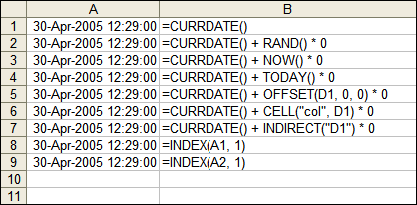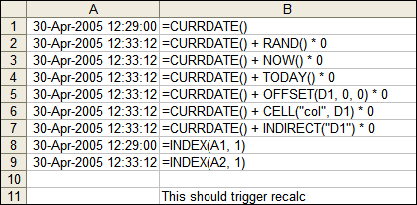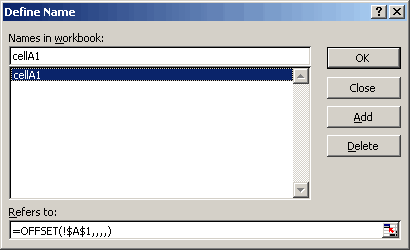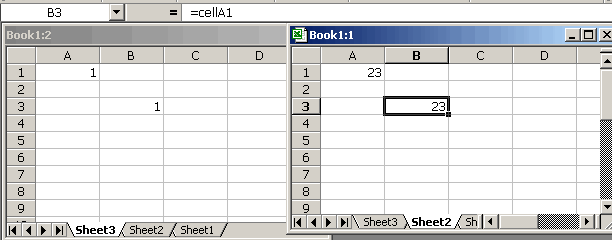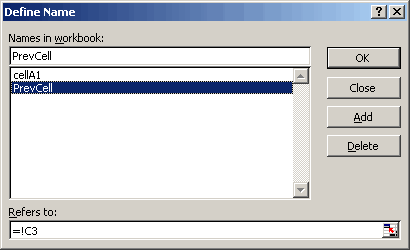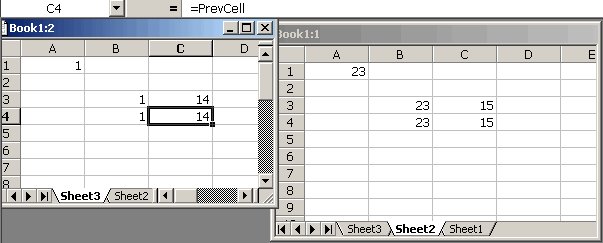EEE#21: Excel User Defined Functions That Incorporate MapPoint Functionality
By David Hager
–Note: Excel 2003 and MapPoint 2004 were used in the development of this technique and its use with other versions has not been tested.–
The integration that Microsoft provides between Excel and MapPoint for importing and exporting data provides a powerful method for visual data analysis. As it turns out, there is another way to obtain information from MapPoint to Excel that is not as well-known.
User-defined functions (UDF) are used in Excel worksheets is the same way that native Excel functions are used. The VBA code for an Excel UDF is written in a standard module in the Excel VBE and called by entering the function in a formula in a worksheet cell. In order to incorporate MapPoint automation in an Excel UDF, open the Visual Basic Environment (VBE) by using the Alt-F11 keys. Then, under Tools|References check the Microsoft MapPoint 11.0 Object Library (North America).
A simple example of an Excel UDF that incorporates MapPoint functionality is shown below.
Function StraightLineDist(strPoint1, strPoint2)
Dim objApp As New MapPoint.Application
Set objMap = objApp.ActiveMap
Set objLocate1 = objMap.FindResults(strPoint1).Item(1)
Set objLocate2 = objMap.FindResults(strPoint2).Item(1)
StraightLineDist = Application.Round(CStr(objLocate1.DistanceTo(objLocate2)), 5)
End Function
It is quite rare to find an example where the VBA code for an Excel UDF successfully instantiates an application. In this case, an instance of MapPoint is created with the statement
Dim objApp As New MapPoint.Application
that allows the Excel UDF access to a valuable source of location information.
The FindResults method works in the same way that the Place/Data tab in the dialog box opened from Edit|Find of the MapPoint main menu does. The Item(1) property returns the best choice based on the available information. As an example, type the following in an Excel worksheet.
A1: Beaumont, Tx
A2: Houston, Tx
A3: =StraightLineDist(A1, A2)
The result returned in cell A3 is 77.11092, which is the number of miles as the crow flies between Beaumont and Houston Texas as calculated by the DistanceTo method.
In order to improve performance of the StraightLineDist function, the statement
Application.Volatile False
can be used in the code to limit function calls to only those times when the input data is changed. It might be also advantageous to set the MapPoint objects to nothing in order to remove them from memory.
The next example returns the distance for a multiple point route and contains an element that is perhaps unique among UDF s.
Function MPRouteDist(iMPType As Integer, ParamArray WPoints())
Dim objApp As New MapPoint.Application
Set objMap = objApp.ActiveMap
With objMap.ActiveRoute
For Each wpoint In WPoints
.Waypoints.Add objMap.FindResults(wpoint).Item(1)
Next
.Waypoints.Item(1).SegmentPreferences = iMPType
.Calculate
MPRouteDist = Application.Round(CStr(.Distance), 5)
End With
objMap.Saved = True
End Function
The iMPType variable is the type of route to be returned:
0 = Travel using the quickest route
1 = Travel using the shortest route
2 = Travel on preferred roads as set in the Preferred Roads dialog box
The ParamArray WPoints() statement allows for an arbitrary number of waypoint function arguments along the route.
By entering the following formula, the distance for the quickest round trip route from Houston is returned (882.89018 miles).
=MPRouteDist(0,A1, A2,A3,A4,A1)
where:
A1: Houston, Tx
A2: Dallas, Tx
A3: San Antonio, Tx
A4: Corpus Christi, Tx
This function actually makes changes on the active MapPoint map (not visible) and a prompt appears asking to save those changes unless the statement
objMap.Saved = True
is included in the code. This writer does not know of another example where an Excel UDF modifies another application. This unusual behavior serendipitously provides a simple way to generate route maps from Excel. If the following formula is entered without the objMap.Saved = True statement in the code, the route map from Houston to Dallas is generated and can be saved. Thus, generation of route maps from MapPoint is now as easy as entering an address in a worksheet cell.
=MPRouteDist(0,A1, A2)
In summary, Excel UDFs provide easy access to the rich store of information in MapPoint and these examples just scratch the surface of what is possible. For example, I have made Excel UDFs that draw geometric shapes around MapPoint locations. This and other challenges are left to the reader.
